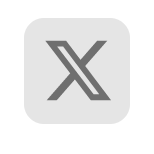Generative AI is a game-changer for businesses seeking to drive innovation and gain a competitive edge. From startups to multinational corporations, the race is on to leverage this transformative technology. However, the successful integration of Generative AI hinges on the swift modernization of legacy applications and the rethinking of entrenched data strategies.
The traditional approach to app modernization has been to rewrite and create new systems from the ground up or wholesale refactoring which is even more cumbersome.
Completion is always over the horizon for such projects. And these traditional app modernization approaches are fraught with a myriad of challenges.

App Modernization powered by “PeerAI”
We at PeerIslands have created a suite of products to help customers modernize their legacy applications and accelerate the integration of Generative AI capabilities into their products.
Born out of deep knowledge and experience transforming complex workloads and migrating them modern cloud-native technology stack, we have built the following products that leverages the capabilities of Large Language Models (LLMs).

Our Proven Process
While there are solutions that convert old code into a new technology stack, PeerAI takes a completely different approach. PeerAI thoroughly analyzes the legacy codebase and its artifacts and extracts knowledge, rules, and other business requirements. With its human-in-the-loop approach, we enable the design and validation of the target architecture before proceeding to code generation.
This approach ensures we don’t convert a procedural COBOL program into a procedural Java program. PeerAI uses the business functionality from the old code and the knowledge extracted to generate new code following the idiomatic approach of the target technology stack and following its best practices.

Multi-agent Orchestration Framework
A simple, prompt engineering solution is insufficient for a complex engineering requirement such as app modernization.
PeerAI automates app modernization by employing a library of proprietary tools and agents and an orchestration engine built on LangChain and LangGraph.
PeerAI makes use of MongoDB Vector Store to power its RAG architecture.
A typical software development lifecycle requires multiple roles to work together including Product Manager, Architect, Developers, Testers, and DevOps engineers.
With PeerAI we have built AI agents that mimic each of these roles above, and a proprietary orchestration engine that allows these agents to work together to automate app modernization.
Proven architecture with security as its core
PeerAI is built with enterprise customers in mind — with a clear separation of control and data planes. PeerAI sets up a sandbox deployed in the customer data plane, connecting to the LLM and Vector Store, available within the customer cloud environment. The code and other artifacts do not leave the customer data plane.

Battle-tested in the field
The above process and design not only accelerates app modernization but also guarantees code accuracy and validation.
Our proven methodology shortens every aspect of a software development lifecycle, evidenced by the metrics gathered from our past engagements.

Looking ahead
The world of Generative AI and its applications is evolving rapidly. At PeerIslands, we are at the forefront of this technological advancement. We are continuously innovating, using the power of Generative AI to drive application modernization and enable our customers to build “intelligent applications”.
In our upcoming blog post, we will delve deeper into PeerAI Intelligent App Copilot, which is enabling our customers to rapidly build semantic search and other Generative AI capabilities into their products.
Our goal is to make the integration of these innovative technologies as seamless as possible, and PeerAI is a key part of that strategy. By providing a robust and user-friendly platform for the deployment of semantic search and Generative AI capabilities, we are helping our customers stay ahead in the competitive business landscape.


